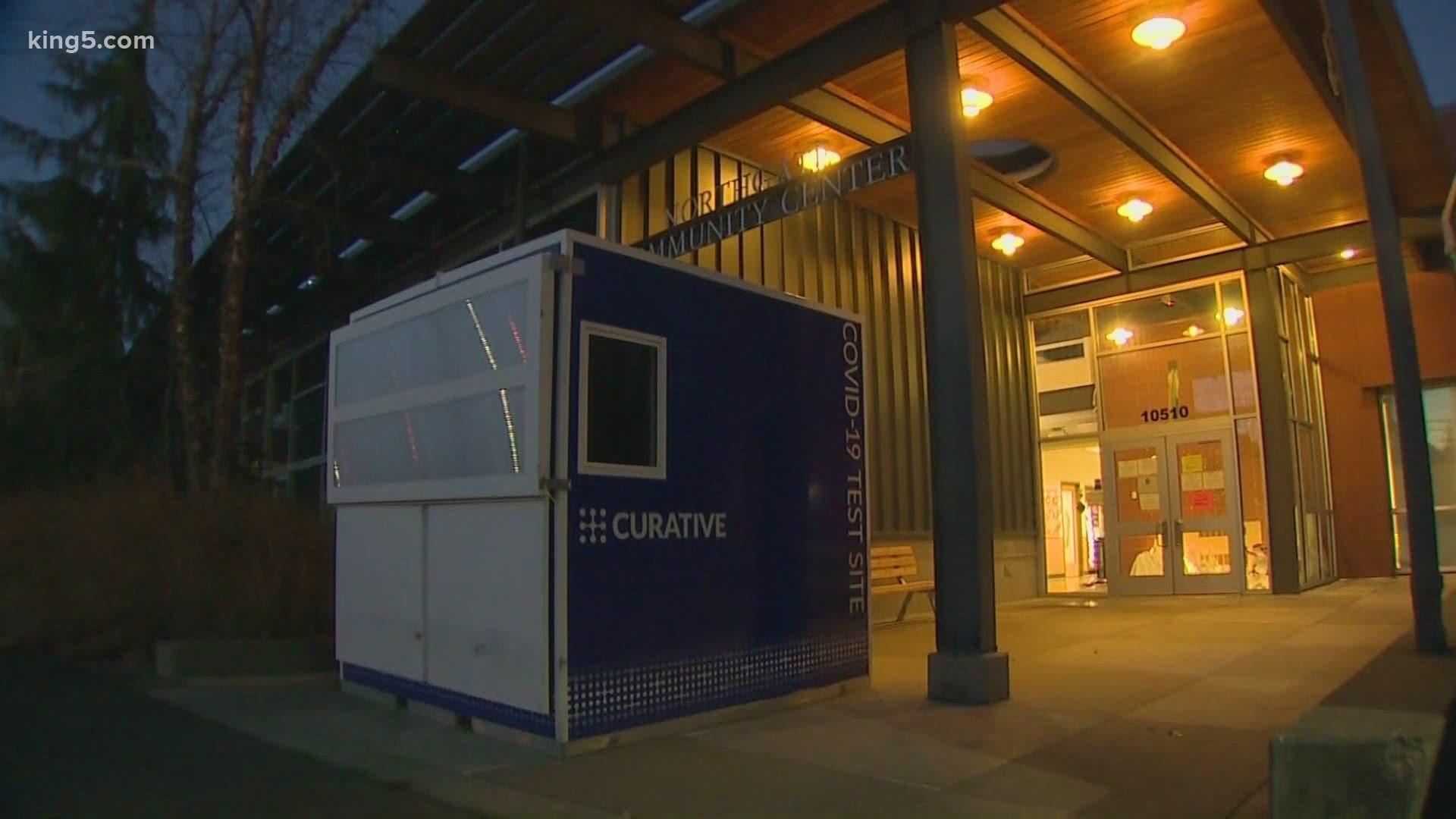SEATTLE — In December, the City of Seattle announced the arrival of three COVID-19 testing kiosks created by the company Curative.
They’re convenient and easy to use. You make an appointment online, walk up, swab your own mouth and in about 48 hours, Curative tells you if your test came back positive or negative.
But now the FDA says those results may not be as accurate as you’d think.
“What has to be said is: right now, we have reason to believe that these tests actually may misidentify positives as negatives,” said Dr. Geoffrey Baird, the Interim Chair for the Department of Laboratory Medicine & Pathology at UW Medicine.
It has to do with Curative’s use of mouth swabs instead of that infamous deep nasal swab typically used in COVID-19 testing, according to Baird.
“It does look like those types of swabs, so the oral, or the throat swab are just lower in sensitivity, that means they’re more likely to miss a true positive if it’s in fact there,” he said. “Coronavirus, it seems to like to hang out in the back of the nose and so that seems to be the best most, sensitive area for us to pick it up if it’s there.”
Curative told KING 5 that their test meets the FDA's regulations.
“Curative remains committed to following FDA and CMS regulations in the development, testing, and use of our Emergency Use Authorized test, and in providing medical devices and services that meet or exceed our customer's expectations operating in accordance with these requirements,” the company's statement read, in part.
While other areas announced that they would discontinue the use of the Curative tests because of the FDA's warning, Seattle plans to keep using the kiosks to keep coronavirus testing accessible, said Mayor Jenny Durkan, in a statement issued to KING 5:
“It seems that the FDA is advising that if the procedures as outlined in the EUA are not followed closely, there is a risk of a false negative. The same inherent risk would exist for any self-swab for a COVID sample. Keep in mind as well that a test not done at all has a zero percent chance of finding the COVID-19 virus. Doing more testing, even when using a test with a slightly lower sensitivity rate than the nasopharyngeal (deep nasal) swab administered at the city-run sites, is the way to go to further protect communities."
According the Baird, the option to continue using the kiosks comes down to weighing the importance of test accuracy versus accessibility to tests.
But if it were up to him, he’d go elsewhere.
“At the personal level you know, what would I want my family to have? What would I want myself to have? And in every argument I’ve been in, because I’m a lab test doctor, I almost always really strongly argue for the best test,” he said.
Curative's full statement:
“Curative's test has been validated and is being offered during the pandemic under an Emergency Use Authorization, and is labeled with specific warnings, precautions, and limitations that FDA reiterated in the Safety Communication. The test performance and labeling, however, have not changed, nor has the company observed any changes in test performance. We have been working with the agency to address their concerns and these limitations, and we will continue to work interactively with FDA through the Emergency Use Authorization process.
"We understand that the Safety Communication seeks to ensure that Curative's test is administered and performed according to the labeling and limitations in the EUA.
"Curative will continue to work actively with FDA to provide additional data required to address the limitations and precautions. Curative remains committed to following FDA and CMS regulations in the development, testing, and use of our Emergency Use Authorized test, and in providing medical devices and services that meet or exceed our customer's expectations operating in accordance with these requirements.”


